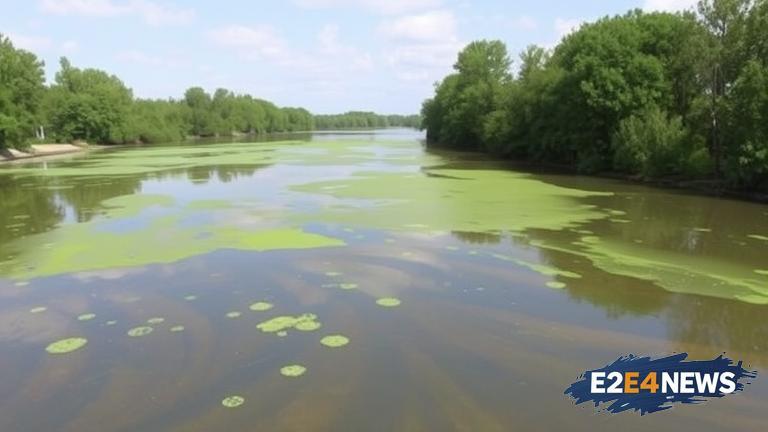A toxic algae bloom has been detected in the Tippecanoe River, located in Indiana, USA. The discovery was made by local authorities, who are now urging residents to avoid contact with the water. The algae bloom is believed to have been caused by an excess of nutrients in the water, such as phosphorus and nitrogen, which can come from sources like agricultural runoff and sewage. The toxic algae can produce harmful toxins that can be dangerous to humans and animals if ingested or even just touched. Symptoms of exposure to the toxins can include skin irritation, respiratory problems, and liver damage. In severe cases, it can even be fatal. Officials are warning residents to avoid swimming, fishing, and boating in the affected area until further notice. They are also advising against drinking water from the river or using it for irrigation purposes. The Indiana Department of Environmental Management (IDEM) is working to determine the extent of the bloom and to develop a plan to mitigate its effects. In the meantime, residents are being advised to take precautions to avoid exposure to the toxic algae. This includes avoiding contact with the water, keeping pets away from the river, and washing hands thoroughly after handling fish or other aquatic animals. The IDEM is also working to educate the public about the dangers of toxic algae blooms and the steps that can be taken to prevent them. The agency is urging residents to report any sightings of algae blooms to the authorities, so that they can be quickly identified and addressed. The toxic algae bloom in the Tippecanoe River is a serious concern, and residents are being urged to take it seriously. The IDEM is working to protect the health and safety of residents, and to preserve the environmental quality of the river. The agency is also working with local officials to develop long-term solutions to prevent future algae blooms. This includes implementing measures to reduce nutrient runoff, such as improving sewage treatment and promoting best management practices for farmers. By working together, officials hope to minimize the impact of the toxic algae bloom and to restore the health of the Tippecanoe River. The situation is being closely monitored, and residents will be updated as more information becomes available.
